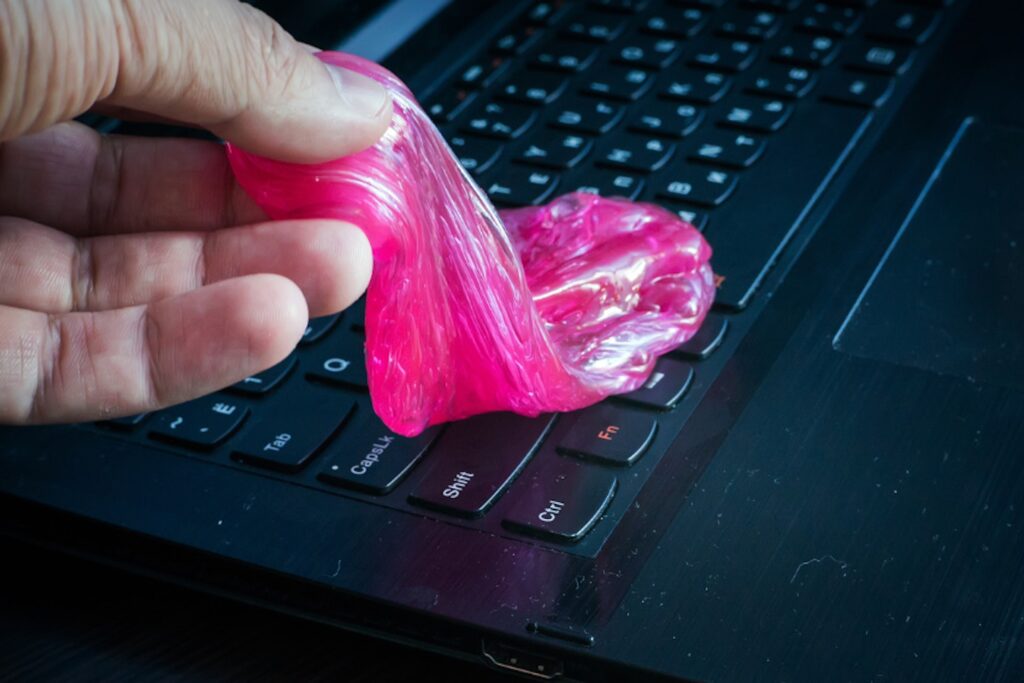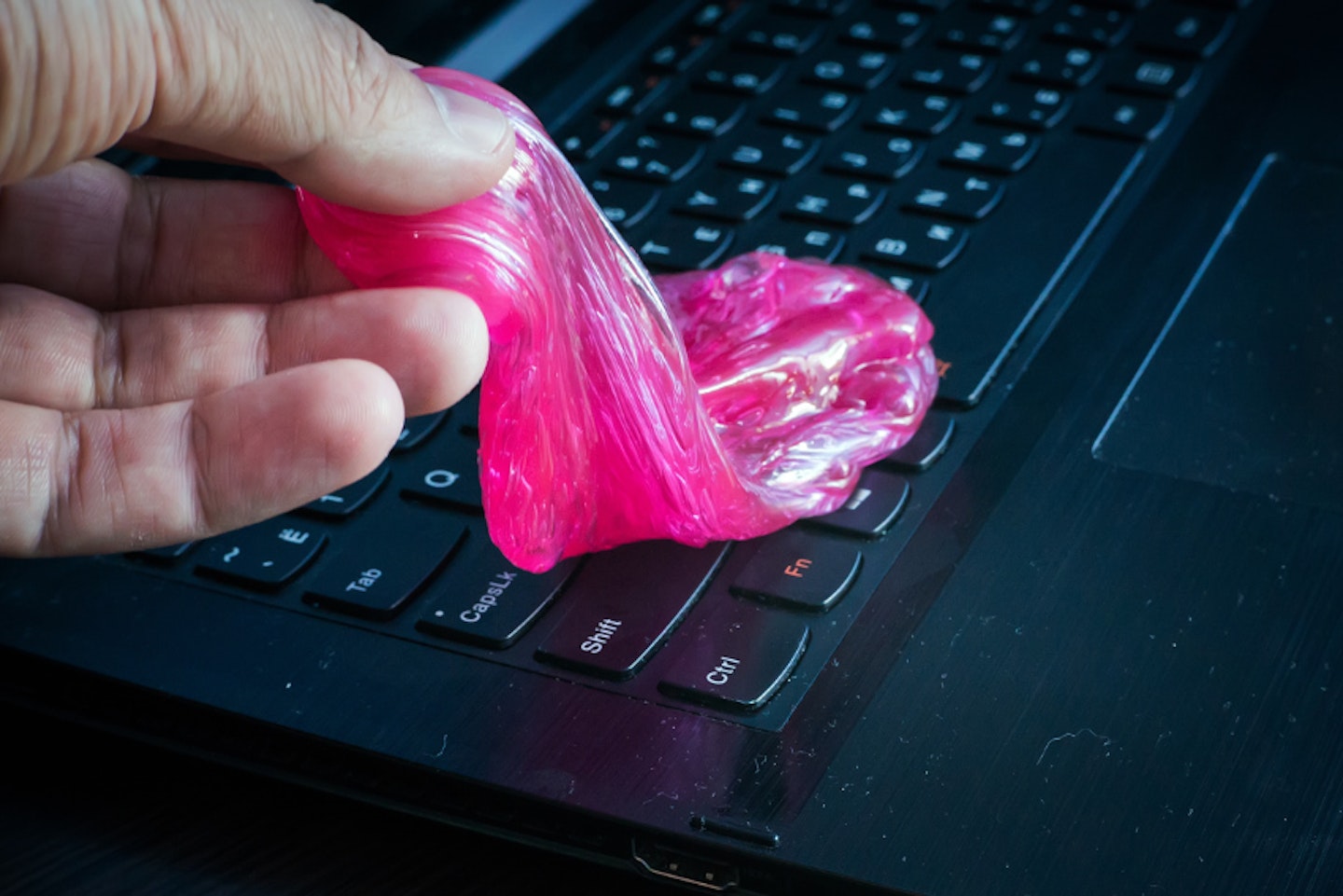
The Ultimate Guide to the Best Keyboard Cleaners: Keeping Your Keys Pristine
In today’s digital age, our keyboards are indispensable tools, whether we’re typing emails, writing code, or gaming. However, keyboards are notorious for accumulating dust, crumbs, and even bacteria, making regular cleaning essential. Choosing the best keyboard cleaner can significantly improve hygiene, prolong the lifespan of your keyboard, and enhance your overall typing experience. This comprehensive guide explores the various types of keyboard cleaners available, offering insights into their effectiveness and suitability for different keyboard types. We’ll delve into everything from compressed air and cleaning gels to specialized wipes and mini vacuums, helping you make an informed decision. Finding the best keyboard cleaner is easier than you think!
Why Cleaning Your Keyboard Matters
Before diving into the specifics of keyboard cleaners, let’s consider why keyboard hygiene is paramount. Keyboards, due to their intricate design and frequent contact with our hands, become breeding grounds for germs and debris. Studies have shown that keyboards can harbor more bacteria than a toilet seat! Regular cleaning not only improves hygiene but also prevents keys from sticking, ensures smooth operation, and maintains the aesthetic appeal of your workspace. A clean keyboard contributes to a healthier and more productive environment.
Types of Keyboard Cleaners
The market offers a wide array of keyboard cleaners, each with its own strengths and weaknesses. Understanding these differences is crucial for selecting the most appropriate option for your needs.
Compressed Air
Compressed air is a staple in keyboard cleaning. It effectively blasts away loose dust, crumbs, and debris from between the keys. Its non-contact nature makes it safe for most keyboards, including mechanical keyboards with delicate switches. When using compressed air, hold the can upright and use short bursts to avoid damaging the keyboard. Be sure to target the spaces between the keys and any visible accumulation of dirt. It’s a great first step in any keyboard cleaner routine.
Cleaning Gels
Cleaning gels, also known as keyboard slime or putty, are a fun and effective way to remove stubborn dirt and grime from keyboards. These gels conform to the shape of the keys, reaching into crevices that other cleaners can’t access. To use, simply press the gel onto the keyboard, allowing it to pick up dirt, and then peel it away. Ensure that the gel is specifically designed for electronics to avoid leaving residue. Some cleaning gels are reusable, making them a cost-effective keyboard cleaner option.
Keyboard Cleaning Wipes
Keyboard cleaning wipes are pre-moistened cloths designed to safely clean and disinfect keyboard surfaces. These wipes typically contain isopropyl alcohol, which effectively kills bacteria and viruses. When using cleaning wipes, ensure they are not excessively wet to prevent liquid from seeping into the keyboard. Wipe the keys and surrounding areas thoroughly, and allow the keyboard to air dry before use. These are convenient and offer a quick solution for maintaining a clean keyboard. They are often considered the best keyboard cleaner for on-the-go situations.
Mini Keyboard Vacuums
Mini keyboard vacuums are small, handheld devices specifically designed to clean keyboards. These vacuums come with various attachments, such as brushes and crevice tools, to effectively remove dust and debris from hard-to-reach areas. While mini vacuums can be effective, they may not be as powerful as compressed air for dislodging stubborn particles. They are, however, a good option for regular maintenance and preventing buildup. Consider it another tool in your keyboard cleaner arsenal.
Microfiber Cloths
A microfiber cloth is a versatile and gentle option for cleaning keyboard surfaces. These cloths are highly absorbent and effectively remove dust, fingerprints, and smudges without scratching the keys. For best results, dampen the cloth with a small amount of distilled water or a specialized screen cleaner. Avoid using harsh chemicals or abrasive cleaners, as these can damage the keyboard’s finish. Regular wiping with a microfiber cloth can keep your keyboard looking its best. It’s an essential component for maintaining a clean keyboard and can be used in conjunction with other keyboard cleaner methods.
Choosing the Right Keyboard Cleaner for Your Needs
Selecting the best keyboard cleaner depends on several factors, including the type of keyboard you own, your budget, and your cleaning preferences. Here’s a breakdown to help you make the right choice:
For Mechanical Keyboards
Mechanical keyboards are prized for their tactile feel and durability, but their intricate design can make cleaning challenging. Compressed air is generally the safest and most effective option for removing dust and debris from between the keys. Cleaning gels can also be used, but ensure they are non-residue and safe for use with mechanical switches. Avoid using excessive amounts of liquid, as this can damage the switches. Regular maintenance with compressed air and occasional cleaning with gel can keep your mechanical keyboard in top condition. When looking for the best keyboard cleaner for mechanical keyboards, consider the delicate components.
For Membrane Keyboards
Membrane keyboards are more common and generally easier to clean than mechanical keyboards. Cleaning wipes and microfiber cloths are suitable for cleaning the surface of membrane keyboards. Compressed air can be used to remove debris from between the keys. Avoid submerging membrane keyboards in water or using harsh chemicals, as this can damage the membrane layer. A combination of compressed air and cleaning wipes often provides the best keyboard cleaner solution for membrane keyboards.
For Laptop Keyboards
Laptop keyboards require extra care due to their compact design and integrated components. Compressed air is essential for removing dust and debris from between the keys without damaging the underlying components. Cleaning wipes can be used to clean the surface, but ensure they are not excessively wet. Avoid using cleaning gels or mini vacuums, as these can potentially damage the laptop’s internal components. The best keyboard cleaner approach for laptops involves gentle and careful methods.
Step-by-Step Guide to Cleaning Your Keyboard
Regardless of the type of keyboard cleaner you choose, following a systematic approach ensures thorough cleaning and minimizes the risk of damage.
- Power Down: Always turn off your keyboard or disconnect it from your computer before cleaning. This prevents accidental key presses and potential electrical damage.
- Remove Loose Debris: Use compressed air to blast away loose dust, crumbs, and debris from between the keys. Hold the can upright and use short bursts, targeting the spaces between the keys.
- Clean the Surface: Use a cleaning wipe or a microfiber cloth dampened with distilled water or a specialized screen cleaner to wipe the surface of the keys and surrounding areas. Avoid using excessive amounts of liquid.
- Address Stubborn Dirt: For stubborn dirt and grime, use a cleaning gel or a cotton swab dampened with isopropyl alcohol. Gently rub the affected areas, being careful not to apply too much pressure.
- Dry Thoroughly: Allow the keyboard to air dry completely before reconnecting it to your computer. This prevents water damage and ensures smooth operation.
Maintaining Keyboard Hygiene
Regular cleaning is essential for maintaining keyboard hygiene and preventing the buildup of dirt and bacteria. Aim to clean your keyboard at least once a week, or more frequently if you use it heavily. In addition to regular cleaning, consider the following tips:
- Wash Your Hands: Wash your hands regularly, especially before using your keyboard. This reduces the amount of dirt and bacteria transferred to the keys.
- Avoid Eating and Drinking Near Your Keyboard: Food and drinks can easily spill onto your keyboard, creating a breeding ground for bacteria. Avoid eating and drinking near your keyboard to prevent spills and crumbs.
- Use a Keyboard Cover: A keyboard cover can protect your keyboard from dust, spills, and other contaminants. These covers are typically made of silicone or plastic and can be easily removed and cleaned.
Common Mistakes to Avoid
While cleaning your keyboard is a straightforward process, avoiding common mistakes can prevent damage and ensure optimal results.
- Using Excessive Liquid: Avoid using excessive amounts of liquid when cleaning your keyboard. Liquid can seep into the keyboard and damage internal components.
- Using Harsh Chemicals: Avoid using harsh chemicals or abrasive cleaners, as these can damage the keyboard’s finish and keys.
- Forgetting to Disconnect: Always disconnect your keyboard from your computer before cleaning to prevent accidental key presses and potential electrical damage.
- Ignoring the Underside: Don’t forget to clean the underside of your keyboard, as this area can also accumulate dust and debris.
The Future of Keyboard Cleaning
As technology evolves, so too will the methods and tools used for keyboard cleaning. We can anticipate the development of more advanced cleaning solutions, such as self-cleaning keyboards or automated cleaning devices. Nanotechnology and antimicrobial coatings may also play a role in preventing the buildup of dirt and bacteria on keyboards. Staying informed about these advancements can help you maintain the best keyboard cleaner practices in the future.
Conclusion: Keeping Your Keyboard Clean and Functional
Maintaining a clean keyboard is essential for hygiene, performance, and longevity. By understanding the various types of keyboard cleaners available and following a systematic cleaning approach, you can keep your keyboard in top condition. Whether you prefer compressed air, cleaning gels, wipes, or mini vacuums, the key is to clean regularly and avoid common mistakes. A clean keyboard contributes to a healthier and more productive environment, ensuring that you can continue to type with ease and confidence. So, invest in the best keyboard cleaner for your needs and make keyboard cleaning a regular part of your routine. [See also: How to Clean a Mechanical Keyboard], [See also: Best Desk Vacuum Cleaners], [See also: Keyboard Maintenance Tips]

